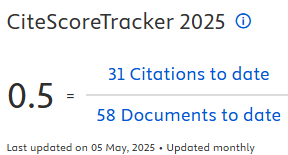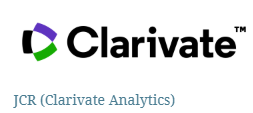The relationship between innovation ecosystem and bioeconomy: A bibliometric review
DOI:
https://doi.org/10.5585/2025.26936Keywords:
innovation ecosystem, green economy, sustainable development, bioeconomyAbstract
Objective: the bioeconomy emerges as an innovative and sustainable approach to face the various global challenges related to food security, climate change and the use of natural resources. The Quintuple Helix model includes environmental concerns and emphasizes transforming society and the current economic system to become more sustainable. Therefore, this article aims to analyze how these themes are related in international literature.
Methodology: bibliometric research in the Scopus database that brought together 82 publications.
Originality/Relevance: identification of the relationship between concepts is essential, as innovation ecosystems play a crucial role in the promotion and development of the bioeconomy, by boosting research, development and adoption of innovative solutions that sustainably use available biological resources.
Main Results: as a result it was possible to identify the main keywords, being green economy; sustainability development; bioeconomy; innovation and sustainability. Furthermore, the most cited authors are Laurens Klerkx and David Rose and the countries with the highest number of publications are China, Germany and the United States. The results also indicate that there are several clusters in the world researching innovation ecosystems and relating this topic to the bioeconomy, whose content has a field of research that can be explored.
Technical/methodological contributions: the results obtained from the bibliometric review make it possible to analyze scientific productivity through the quantitative study of publications, providing an overview of current affairs and trends related to the topic of study.
Social/management contributions: synthesize and organize existing knowledge on the topics researched. In addition to identifying gaps in the literature, it also allows stimulating innovation, through access to information for researchers, professionals and interested parties in general.
Downloads
References
Adner, R. (2006). Combine sua estratégia de inovação com seu ecossistema de inovação. Harvard Business Review, 84(4): 98–107. https://hbr.org/2006/04/match-your-innovation-strategy-to-your-innovation-ecosystem
Amonarriz, C. A., Iturrioz, C., Narvaiza, L., & Parrilli, M. D. (2019). O papel do capital social nos sistemas regionais de inovação: criatividade capital social e seu processo de institucionalização. Artigos em Regional Ciência, 98: 35–51. https://doi.org/10.1111/pirs.12329
Barcellos-Paula, L., La Vega, I. D., & Gil-Lafuente, A. M. (2021). The Quintuple Helix of innovation model and the SDGs: Latin-american countries’ case and its forgotten efects. Mathematics, 9(4): 416. https://doi.org/10.3390/math9040416
Birch, K., Lewidow, L., & Papaioannou, T. (2010). Capital sustentável? a neoliberalização da natureza e do conhecimento na bioeconomia europeia baseada no conhecimento^. Sustentabilidade, 2: 2898–2919. https://doi.org/10.3390/su2092898
Brears, R. C. (2018). A Economia Verde e o Nexo Água-Energia-Alimentos. Palgrave Macmillan. https://link.springer.com/book/10.1007/978-3-031-39679-3
Bugge, M. M., Hansen, T., & Klitkou, A. (2016). O que é bioeconomia? Uma revisão da literatura. Sustentabilidade, 8: 1–22. https://doi.org/10.3390/su8070691
Carayannis, E. G., & Campbell, D. F. (2010). Triple helix, quadruple helix and Quintuple Helix and how do knowledge, innovation and the environment relate to each other? International Journal of Social Ecology and Sustainable Development, 1(1): 4. https://doi.org/10.4018/JSESD.2010010105
Carayannis, E. G, Campbell, D. F. J. (2009). Modo 3ÿ e 'Quádrupla Hélice': em direção a um ecossistema de inovação fractal do século XXI. Internacional J. Tecnologia. Gerenciar, 46 (3–4): 201–234. DOI: 10.1504/IJTM.2009.023374
Carayannis, E. G., & Campbell, D. F. J. (2010). “Mode 3 Knowledge Production in Quadruple and Quintuple Helix Innovation Systems: 21st-Century Democracy, Innovation, and Entrepreneurship for Development”. Springer. https://doi.org/10.1007/978-1-4614-2062-0_1
Chen, Z., Marin, G., Popp, D., & Vona, F. (2020). Estímulo verde numa recuperação pós-pandemia: O papel das competências para uma recuperação resiliente. Economia Ambiental e de Recursos, 76: 901–911. https://doi.org/10.1007/s10640-020-00464-7
Cheng, Y., Liu, H., Wang, S., Cui, X., & Li, Q. (1º de junho de 2021). Ação global em relação aos ODS: revisão de políticas e perspectivas na era pós-pandemia. Sustentabilidade (Suíça) . MDPI AG. https://doi.org/10.3390/su13116461
Chesbrough, H.W. (2003). Open innovation: the new imperative for creating and profiting from technology. Harvard Business School Press. https://archive.org/details/openinnovationne0000ches
Comissão Europeia (2012). Inovar para o crescimento sustentável: uma bioeconomia para a Europa. Comissão Europeia. https://www.eea.europa.eu/policy-documents/innovating-for-sustainable-growth-a
Conselho Consultivo Internacional da Cúpula Global de Bioeconomia 2018 – IAC-GBC (2018). Relatório da conferência da cúpula global de bioeconomia. Inovação na bioeconomia global para transformação e bem-estar sustentáveis e inclusivos. https://bmv.global/bioeconomia-inovacao-sustentavel/
Dewick, B., Bengtsson, M., Cohen, M. J., Sarkis, J., & Schröder, P. (2020). The Rise of Innovation Ecosystems and Bioeconomy Research in Europe. Journal of Cleaner Production, 256: 120335. https://www.sciencedirect.com/journal/journal-of-cleaner-production
Dogaru, L. (2021). Economia verde e oportunidades de crescimento verde para o desenvolvimento sustentável. Multidisciplinary Digital Publishing Institute Proceedings, 63(1): 70. https://doi.org/10.3390/proceedings2020063070
Edquist, C. (1997). Systems of innovation: technologies, institutions and organizations. Londres: Pinter Publishers. https://doi.org/10.4324/9780203357620
Etzkowitz, H., & Leydesdorf, L. (2000). The dynamics of innovation: From national systems and “mode 2” to a triple helix of university-industry-government relations. Research Policy, 29(2): 109–123. https://doi.org/10.1016/S0048-7333(99)00055-4
Fleming, D. A. (2014) Efeitos de derrapagem de políticas baseadas na terra: avaliando o Programa de Reserva de Conservação usando imagens de satélite. Artigos em Ciência Regional, 93: S167 – S178.
Franc, S., & Karadžija, D. (2019). Quintuple Helix approach: the case of the European Union. Notitia Casopis Za Ekonomske, Poslovne i Društvene Teme, 5(1): 91–100. DOI: 10.32676/n.5.1.8
Freeman, C. (1987). Política Tecnológica e Desempenho Econômico: lições do Japão. . Londres: Pinter Publisher. https://archive.org/details/technologypolicy00free/page/n5/mode/2up
Geels, F. W. (2004). From sectoral systems of innovation to socio-technical systems. Insights about dynamics and change from sociology and institutional theory. Res. Policy, 33: 897–920. https://doi.org/10.1016/j.respol.2004.01.015
Gibbons, M., Limoges, C., & Nowotny, H. (1994). The New Production of Knowledge: The Dynamics of Science and Research in Contemporary Societies. SAGE Publications Ltd. https://www.ebook.de/de/product/4049559/michael_gibbons_camille_limoges_helga_nowotny_the_new_production_ of_knowledge.html
Grundel, I., & Dahlström, M. (2015). Transição para a bioeconomia, especialização inteligente e hélice quádrupla. (resumo da política 1). Karlstad: Centro de Pesquisa sobre Construção de Região.
Grundel, I., Dahlström, M. A Quadruple and Quintuple Helix Approach to Regional Innovation Systems in the Transformation to a Forestry-Based Bioeconomy. Journal of the Knowledge Economy, 7(4), pp. 963–983. https://doi.org/10.1007/s13132-016-0411-
Haarich, S. (2017). Desenvolvimento da bioeconomia nas regiões da UE: mapeamento dos planos e estratégias de investigação e inovação dos estados-membros/regiões da UE para a Especialização Inteligente (RIS3) em Bioeconomia. Luxemburgo: Serviço das Publicações da União Europeia. https://european-union.europa.eu/institutions-law-budget/institutions-and-bodies/search-all-eu-institutions-and-bodies/publications-office-european-union-op_pt
Hausknost, D., Schriefl, E., Lauk, C., & Kalt, G. A. (2017). Transição para qual bioeconomia? Uma exploração de escolhastécnico-políticas divergentes. Sustentatibilidade, 9(4): 699. DOI: 10.3390/su9040669
Iacob, I., Petre, R., & Nastase, M. (2021). Bioeconomy and Green Economy: Are They the Same? Journal of Cleaner Production, 278: 124051. https://www.sciencedirect.com/journal/journal-of-cleaner-production
Laurens Klerkx, David Rose, Dealing with the game-changing technologies of Agriculture 4.0: How do we manage diversity and responsibility in food system transition pathways? Global Food Security, 24, 2020: 100347. https://doi.org/10.1016/j.gfs.2019.100347
Li, D., Shen, W. Can corporate digitalization promote green innovation? The moderating roles of internal control and institutional ownership. Sustainability (Switzerland), 13(24): 13983 https://doi.org/10.3390/su132413983
Khoshnava, S. M, Rostami, R., Zin, R. M., Štreimikiene, D., Yousefpour, A., Strielkowski, W., & Mardani, A. (2019). Alinhar os critérios da economia verde (ÿE) e dos objetivos de desenvolvimento sustentável (ODS) para implementar o desenvolvimento sustentável. Sustentabilidade, 11. https://www.mdpi.com/journal/sustainability
Lavrinenko, O., Ignatjeva, S., Ohotina, A., Rybalkin, O., Lazdans, D. The role of green economy in sustainable development (Case study: The eu states). Entrepreneurship and Sustainability Issues, 6(3):1113–1126. DOI: 10.9770/jesi.2019.6.3(4)
Leite Filho, G. A. (2008). Padrões de produtividade de autores em periódicos e congressos na área de contabilidade no Brasil: um estudo bibliométrico. Revista de Administração Contemporânea, 12 (2): 533-554. https://doi.org/10.1590/S1415-65552008000200011
Leydesdorff, L., & Etzkowitz, H. (1998). A Tríplice Hélice como modelo de estudos de inovação. Ciência e Políticas Públicas, 25: 195-203. https://doi.org/10.1093/spp/25.3.195
Lundvall, B. A. (1992). Sistemas Nacionais de Inovação – rumo a uma teoria da inovação e aprendizagem interativa. Londres: Pinter Publishers. https://www.jstor.org/stable/j.ctt1gxp7cs
Macias-Chapula, C. A. (1998). O papel da informetria e da cienciometria e sua perspectiva nacional e internacional. Ciência da Informação, 27(2): 134-140. https://doi.org/10.1590/S0100-19651998000200005
Matos, G., Souza, R., Teixeira C. (2021). Ecossistema de inovação e Living Lab: uma análise bibliométrica. Artigo apresentado na 31º Conferncia Anprotec 2021, Brasil. https://via.ufsc.br/wp-content/uploads/Artigo-Living-Lab-Anprotec-2021-1.pdf
Mazzucato, M. (2018). Mission-Oriented Innovation: Challenges and Opportunities. Industrial and Corporate Change, 27(5), 803-815. https://doi.org/10.1093/icc/dty034
Moulaert, F., MacCallum , D., Mehmood, A., & Hamdouch, A. (2013). Manual internacional sobre inovação social: ação coletiva, aprendizagem social e pesquisa transdisciplinar. Reino Unido: Edward Elgar. DOI: 10.3935/rsp.v21i3.1225
Nelson, R. R. (1993). Sistemas nacionais de inovação: um estudo comparativo. Nova York: Universidade de Oxford. https://doi.org/10.1016/S0737-6782(95)90054-3
Pedersen, B. K. (2019). Innovation Ecosystems and the Transition to a Bioeconomy. Journal of Sustainable Innovation, 12(3): 45-67. https://jsi.aspur.rs/aim_scope.php
Pigford, A.-A.E., Hickey, G.M., Klerkx, L. Beyond agricultural innovation systems? Exploring an agricultural innovation ecosystems approach for niche design and development in sustainability transitions. Agricultural Systems, 164: 116–121. https://doi.org/10.1016/j.agsy.2018.04.007
Programa das Nações Unidas para o Meio Ambiente (PNUMA). (2011). Rumo a uma economia verde: Caminhos para o desenvolvimento sustentável e a erradicação da pobreza – uma síntese para os decisores políticos. http://www.unep.org/greeneconom
Rabelo, R. J. & Bernus, P. (2015). Um modelo holístico de construção de ecossistemas de inovação. IFAC-PapersOnLine, 48: 2250–2257. https://doi.org/10.1016/j.ifacol.2015.06.423
Rohracher, H., 2001. Managing the technological transition to sustainable construction of buildings: a socio-technical perspective. Tech. Anal. Strat. Manag. 13 (1), 137–150. DOI: 10.1080/09537320120040491
Schumpeter, J. A. (1934). A Teoria do Desenvolvimento Econômico. (2a ed.). Cambridge: Harvard University Press. https://www.hup.harvard.edu/
Vargo, S. L., & Lusch, R. F. (2004). Evolving to a new dominant logic for marketing. J. Mark, 68(1): 1–17. https://doi.org/10.1509/jmkg.68.1.1.24036
Von Hippel, E. (2005). Democratizing innovation. Cambridge: MIT Press. https://doi.org/10.7551/mitpress/2333.001.0001
Yan, J., Zhang, X., & Li, H. (2021). China’s Growing Influence in Innovation Ecosystems and Bioeconomy Research. Renewable and Sustainable Energy Reviews, 146: 111202. https://www.sciencedirect.com/journal/renewable-and-sustainable-energy-reviews
Downloads
Published
How to Cite
Issue
Section
License
Copyright (c) 2025 Romero Carrilho Felix Júnior, Celson Pantoja Lima, Renan Bernardes Viani, André Silva da Fonseca

This work is licensed under a Creative Commons Attribution-NonCommercial-ShareAlike 4.0 International License.
- Abstract 201
- pdf 99
- pdf (Português (Brasil)) 53











